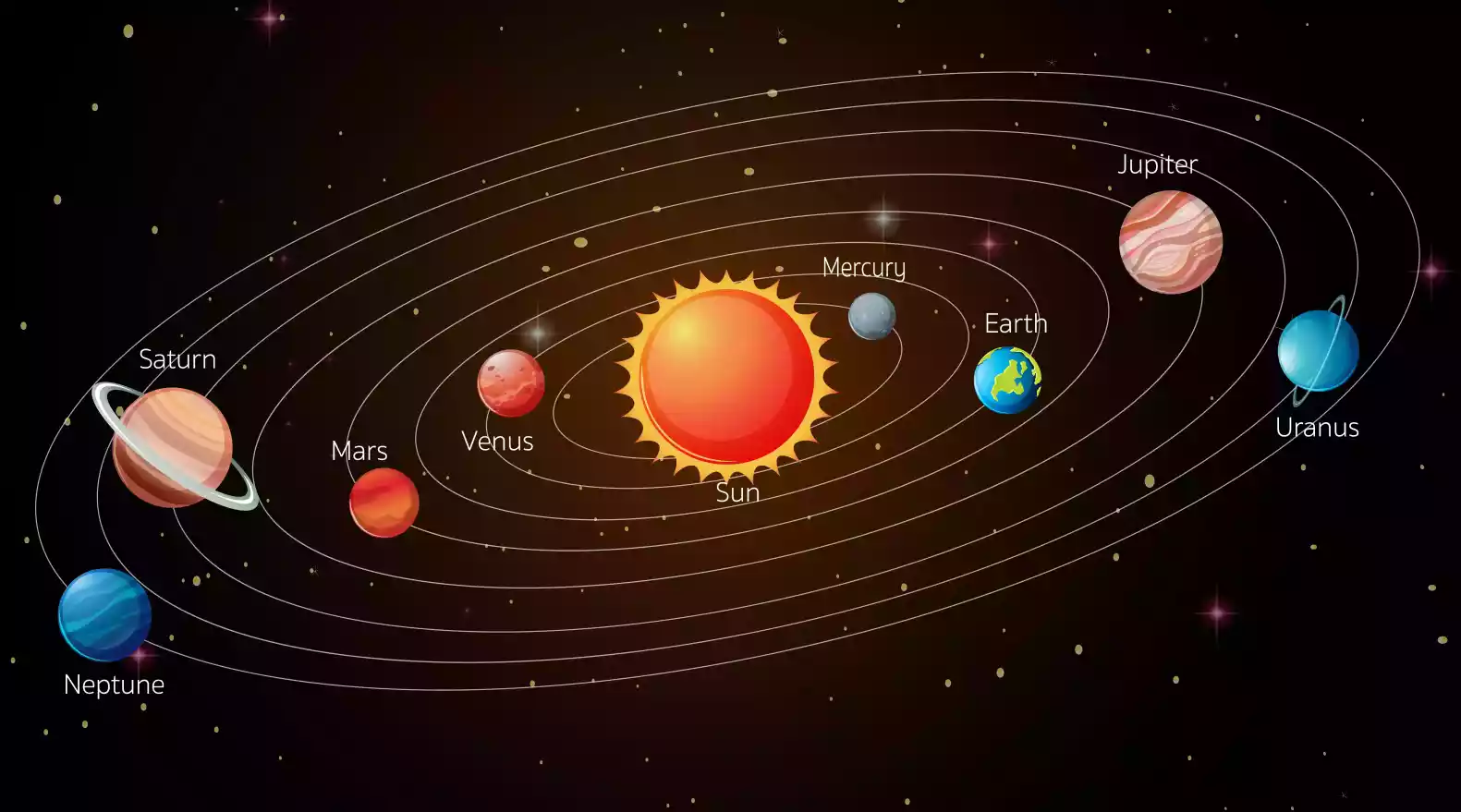Why Mercury is not the Hottest Planet?
Mercury, the closest planet to the Sun in our solar system, might seem like the obvious candidate for the title of the hottest planet.

Image by brgfx on Freepik
However, the reality is quite different. Venus, the second planet from the Sun, actually holds the distinction of being the hottest planet.
In this article, we will look at the reasons why Mercury is not the hottest planet and highlight on the factors that contribute to Venus’ scorching temperatures.
Table of Contents
The Proximity to the Sun
Mercury’s position as the closest planet to the Sun might lead one to assume that it is the hottest.
While proximity to the Sun does play a role in a planet’s temperature, it is not the sole determining factor.
Other variables, such as a planet’s atmosphere and composition, also come into play.
Venus: The Hottest Planet
Surprisingly, Venus takes the crown as the hottest planet in our solar system. Despite being farther from the Sun than Mercury, Venus experiences much higher average temperatures.
Understanding the factors that contribute to this extreme heat is essential to unraveling the mystery.
Mercury’s Lack of Atmosphere
One crucial factor that sets Mercury apart from Venus is its lack of a substantial atmosphere.
Mercury’s atmosphere is incredibly thin, unable to retain or trap heat effectively.
As a result, the surface of Mercury can experience significant temperature variations, with scorching heat during the day and extreme cold at night.
The Greenhouse Effect
In contrast to Mercury, Venus boasts a thick atmosphere composed mainly of carbon dioxide.
This atmospheric composition leads to an intensified greenhouse effect. The greenhouse effect occurs when greenhouse gases trap heat from the Sun, preventing it from escaping back into space.
Carbon dioxide, a potent greenhouse gas, plays a significant role in heating up Venus.
The Albedo
Albedo refers to the measure of how much sunlight a surface reflects. Mercury has a low albedo, meaning it reflects a substantial amount of sunlight.
This reflective property prevents Mercury’s surface from absorbing as much heat as Venus.
In contrast, Venus has a higher albedo, allowing its surface to absorb more sunlight and thus increase its overall temperature.
The Rotation Rate
The rotation rates of Mercury and Venus also contribute to their temperature differences.
Mercury’s rotation period is approximately 59 Earth days, which leads to one side constantly facing the Sun, resulting in extreme heat on that side and extreme cold on the opposite side.
The direct exposure to the Sun causes scorching temperatures, while the side in perpetual darkness experiences frigid conditions.
On the other hand, Venus has a rotation period of about 243 Earth days. Despite the longer rotation period, Venus experiences a more balanced temperature distribution due to its dense atmosphere.
The thick atmosphere of Venus helps to distribute and retain heat, preventing extreme temperature fluctuations between the day and night sides of the planet.
Comparison of Temperatures
Despite Mercury’s proximity to the Sun, the average temperature on its surface is much lower compared to Venus.
The hottest temperature ever recorded on Mercury was around 800 degrees Fahrenheit (426.67 °C).
In contrast, the average surface temperature on Venus is a scorching 867 degrees Fahrenheit (463.89 °C).
These figures highlight the significant disparity in temperatures between the two planets.
Wrap Up
As a wrap up, while Mercury is the closest planet to the Sun, it is not the hottest planet in our solar system.
Venus, with its thick atmosphere, intensified greenhouse effect, higher albedo, and relatively faster rotation, claims the title of the hottest planet.
The absence of a substantial atmosphere on Mercury, coupled with its low albedo and slow rotation, results in its significantly lower average temperatures.
FAQs
- Is Mercury hotter than Venus? No, Venus is hotter than Mercury. Despite being farther from the Sun, Venus experiences much higher average temperatures due to its thick atmosphere and the greenhouse effect.
- Why does Mercury have a thin atmosphere? Mercury’s thin atmosphere is primarily attributed to its relatively weak gravitational pull.
The planet’s gravity is insufficient to retain a substantial atmosphere, leading to its thin composition. - What role does carbon dioxide play in Venus’ temperature? Carbon dioxide in Venus’ atmosphere acts as a greenhouse gas, trapping heat from the Sun and contributing to the planet’s intense heat.
The greenhouse effect caused by carbon dioxide is a significant factor in Venus’ high temperatures. - Can humans survive on Mercury or Venus? Both Mercury and Venus present inhospitable conditions for human survival.
Mercury experiences extreme temperature variations, while Venus has a toxic atmosphere and scorching temperatures, making both planets unsuitable for human habitation. - What is the coldest planet in our solar system? The coldest planet in our solar system is Uranus, with surface temperatures dropping as low as -371 degrees Fahrenheit (-223.89 °C).





